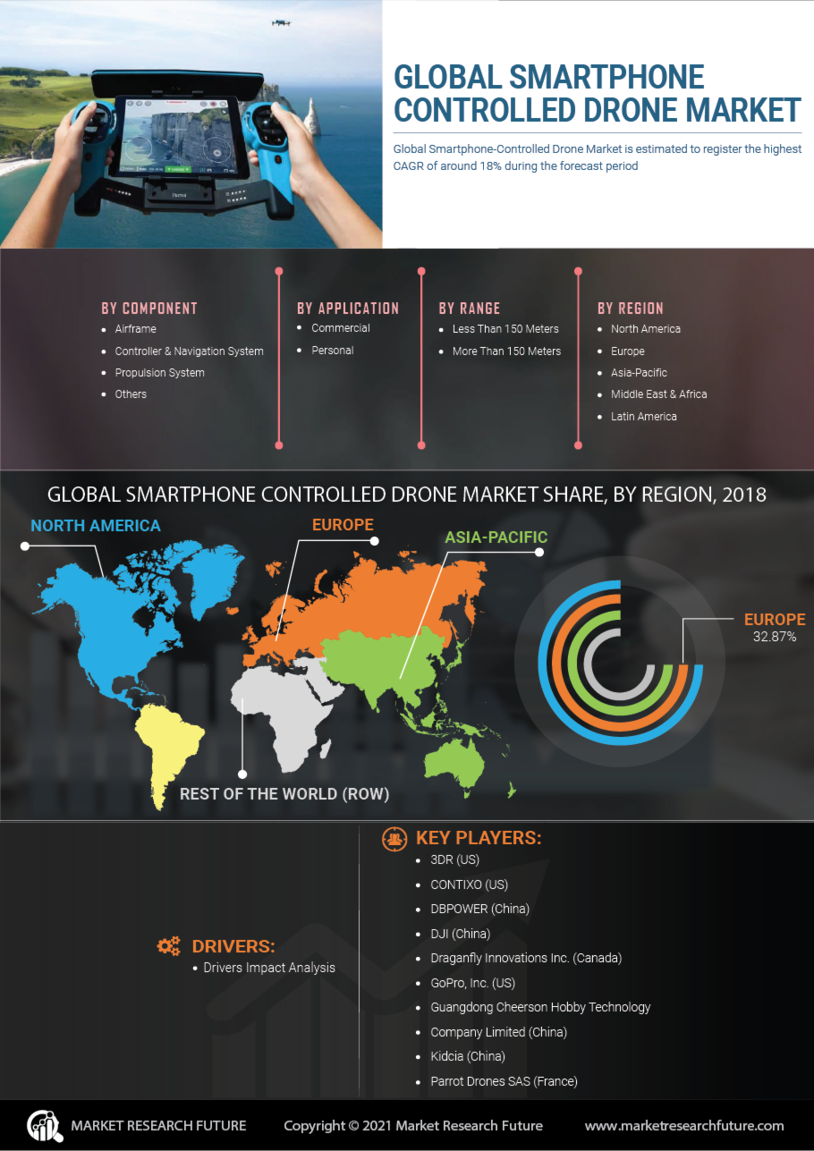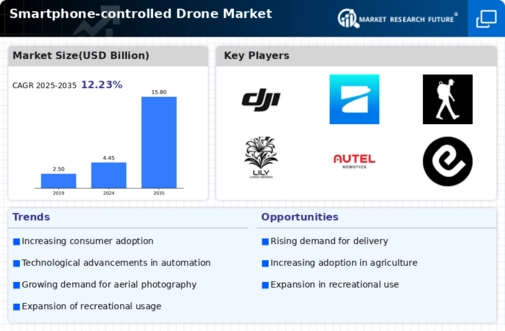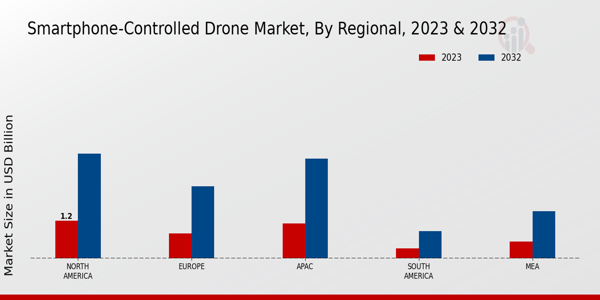Market Growth Projections
The Global Smartphone-controlled Drone Market Industry is poised for substantial growth, with projections indicating a market size of 15.8 USD Billion by 2035. This growth trajectory is underpinned by a compound annual growth rate (CAGR) of 12.23% from 2025 to 2035. The increasing integration of drones in various sectors, coupled with technological advancements, suggests a robust future for the industry. As businesses and consumers alike recognize the benefits of smartphone-controlled drones, the market is likely to experience a surge in demand, positioning it as a key player in the broader technology landscape.
Technological Advancements
The rapid evolution of technology plays a pivotal role in the Global Smartphone-controlled Drone Market Industry. Innovations in battery life, camera quality, and flight stability enhance user experience and operational efficiency. For instance, advancements in AI and machine learning enable drones to perform complex tasks autonomously, appealing to both recreational and commercial users. As of 2024, the market is valued at 4.45 USD Billion, reflecting a growing demand for technologically advanced drones. This trend is expected to continue, with projections indicating a market size of 15.8 USD Billion by 2035, driven by ongoing technological improvements.
Regulatory Support and Frameworks
Regulatory support significantly influences the Global Smartphone-controlled Drone Market Industry, as governments worldwide establish frameworks to facilitate drone operations. Clear regulations regarding airspace usage, safety standards, and operational guidelines encourage businesses and individuals to invest in drone technology. For instance, the Federal Aviation Administration in the United States has implemented rules that promote commercial drone use, thereby expanding market opportunities. This supportive regulatory environment is expected to bolster market growth, contributing to the projected increase in market size from 4.45 USD Billion in 2024 to 15.8 USD Billion by 2035.
Growing Interest in Recreational Use
The Global Smartphone-controlled Drone Market Industry benefits from a burgeoning interest in recreational drone use. Hobbyists and enthusiasts are increasingly drawn to drones for aerial photography, racing, and exploration. This trend is fueled by the accessibility of smartphone-controlled drones, which offer user-friendly interfaces and advanced features. As more individuals engage in drone-related activities, the market is likely to expand, with projections indicating a substantial increase in market value. The growing community of drone users contributes to the overall market dynamics, fostering innovation and competition among manufacturers.
Increased Adoption in Various Sectors
The Global Smartphone-controlled Drone Market Industry witnesses increased adoption across diverse sectors, including agriculture, construction, and logistics. Drones are utilized for crop monitoring, surveying land, and delivering goods, showcasing their versatility. For example, in agriculture, drones equipped with sensors collect data to optimize crop yields, while in construction, they facilitate site inspections and progress monitoring. This cross-sector applicability is likely to contribute to a compound annual growth rate (CAGR) of 12.23% from 2025 to 2035, as businesses recognize the efficiency and cost-effectiveness that drones offer.
Environmental Monitoring and Conservation
The Global Smartphone-controlled Drone Market Industry is significantly impacted by the increasing use of drones for environmental monitoring and conservation efforts. Drones equipped with advanced sensors and imaging technology are employed to track wildlife, monitor deforestation, and assess environmental changes. For example, organizations utilize drones to gather data on endangered species and their habitats, enhancing conservation strategies. This application not only highlights the versatility of drones but also aligns with global sustainability goals. As environmental concerns continue to rise, the demand for drones in these sectors is expected to grow, further driving market expansion.












